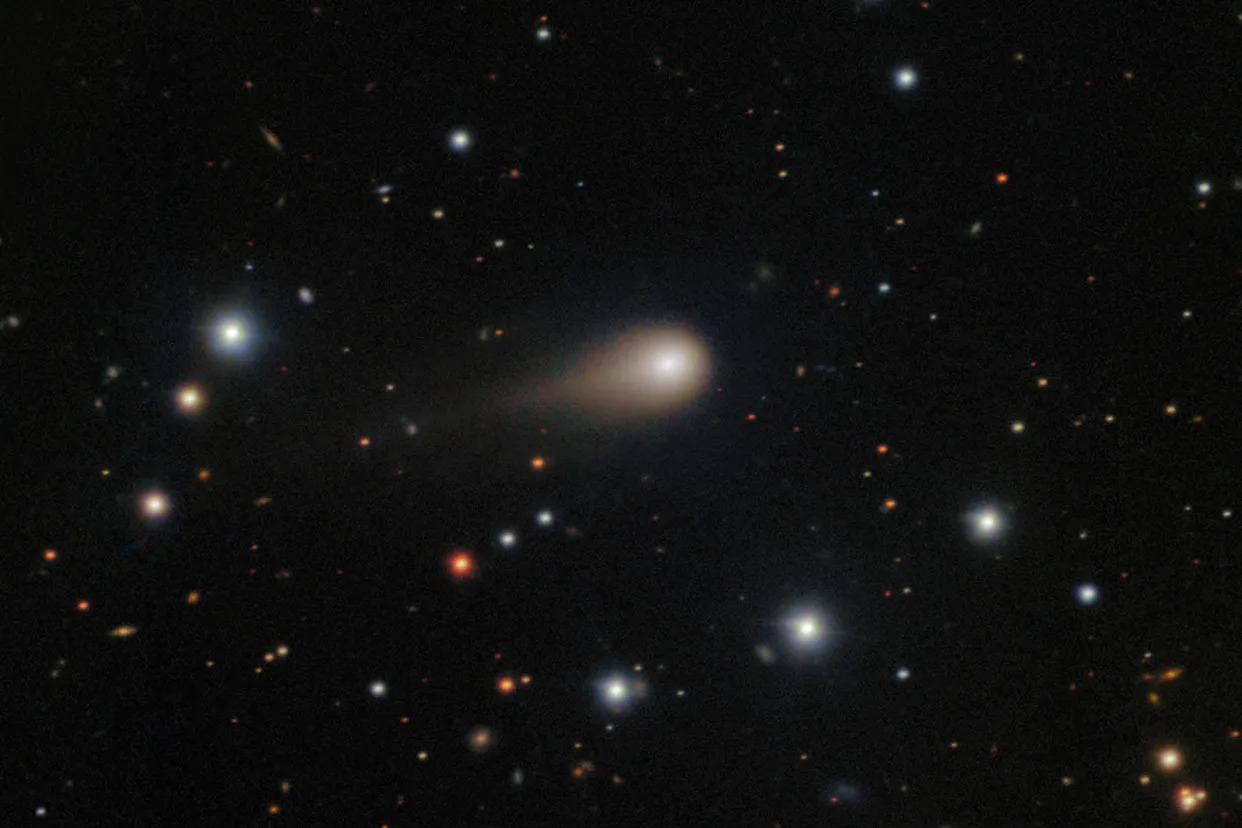Science
Interstellar Comet 3I/ATLAS Approaches Sun, Sparks Global Interest

A remarkable interstellar comet, designated as 3I/ATLAS, is set to reach its closest point to the sun on October 30, 2025. This celestial wanderer has captured the attention of astronomers worldwide, but there is no cause for concern as it will not approach Earth closely.
Discovered on July 1, 2025, by the NASA-funded Asteroid Terrestrial-impact Last Alert System (ATLAS) survey telescope in Rio Hurtado, Chile, Comet 3I/ATLAS is the third known interstellar object to be detected passing through our solar system. Researchers have traced back its observations to as early as June 14, revealing a fascinating glimpse into its origins.
Characteristics and Composition
The comet’s nucleus is estimated to measure between 1,444 feet and 3.5 miles in diameter. Its classification as a comet stems from its composition; astronomers have identified it as being made primarily of ice, surrounded by a bright cloud of gas and dust known as a coma. As 3I/ATLAS approaches the sun, the heat causes its ice to vaporize, giving it a fuzzy appearance and possibly a tail.
Researchers believe that this comet may have formed billions of years ago, potentially making it older than our solar system itself. This extraordinary age offers a unique opportunity for scientists to study the chemical and physical properties of materials from distant star systems.
The Path of 3I/ATLAS
The trajectory of Comet 3I/ATLAS is hyperbolic, meaning it does not follow a traditional orbital path around the sun. Traveling at a speed of approximately 137,000 miles per hour, it is moving too quickly to be captured by the sun’s gravitational pull. NASA has confirmed that the comet will not come closer than 170 million miles to Earth, ensuring no threat to our planet.
After its closest approach to the sun, the comet will reappear on the other side, although visibility without a telescope will be limited. By early December, it will be positioned well beyond Mars’ orbit, continuing its journey through the cosmos.
Scientific Insights and Discoveries
The significance of interstellar objects like 3I/ATLAS lies in their potential to serve as cosmic time capsules. They may contain valuable information about the conditions and materials present in other star systems billions of years ago. Recent observations from the Hubble Telescope have revealed the presence of atomic nickel vapor emanating from the comet, raising questions about its formation.
Astronomers noted that the nickel is detected at a considerable distance from the sun, where temperatures are extremely low—approximately four times the distance of Earth from the sun. The vaporization of solid metals like nickel at such low temperatures is unusual, leading scientists to hypothesize that the nickel may be interacting with carbon monoxide or other organic compounds. This interaction could facilitate the release of nickel atoms at much lower temperatures than would typically be required for direct vaporization.
As Comet 3I/ATLAS continues its journey, astronomers eagerly await further insights from this ancient traveler, deepening our understanding of the universe beyond our own solar system.
-

 Business2 weeks ago
Business2 weeks agoIconic Sand Dollar Social Club Listed for $3 Million in Folly Beach
-

 Politics2 weeks ago
Politics2 weeks agoAfghan Refugee Detained by ICE After Asylum Hearing in New York
-

 Health2 weeks ago
Health2 weeks agoPeptilogics Secures $78 Million to Combat Prosthetic Joint Infections
-

 Science2 weeks ago
Science2 weeks agoResearchers Achieve Fastest Genome Sequencing in Under Four Hours
-

 Lifestyle2 weeks ago
Lifestyle2 weeks agoJump for Good: San Clemente Pier Fundraiser Allows Legal Leaps
-

 Health2 weeks ago
Health2 weeks agoResearcher Uncovers Zika Virus Pathway to Placenta Using Nanotubes
-

 World2 weeks ago
World2 weeks agoUS Passport Ranks Drop Out of Top 10 for First Time Ever
-

 Business2 weeks ago
Business2 weeks agoSan Jose High-Rise Faces Foreclosure Over $182.5 Million Loan
-

 Entertainment2 weeks ago
Entertainment2 weeks agoJennifer Lopez Addresses A-Rod Split in Candid Interview
-

 Top Stories1 week ago
Top Stories1 week agoChicago Symphony Orchestra Dazzles with Berlioz Under Mäkelä
-

 World2 weeks ago
World2 weeks agoRegional Pilots’ Salaries Surge to Six Figures in 2025
-

 Science2 weeks ago
Science2 weeks agoMars Observed: Detailed Imaging Reveals Dust Avalanche Dynamics







